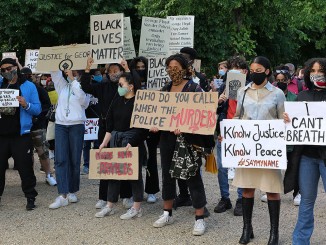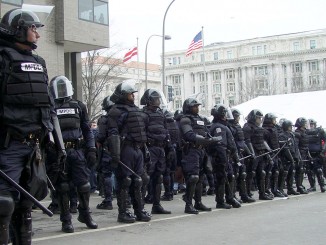One of the most profound struggles in the history of the U.S. was the struggle of the black population during the civil rights movement of the 1950s and 60s. This explosive revolt totally shook every corner of American society. It had an enormous international impact, inspiring struggles across the globe. But most of all, the civil rights movement showed the power of ordinary people to fight against oppression.
The civil rights movement was based on grassroots and local organizing. Young people, mostly from the working class, were at the forefront of the movement and many of the leaders were women. It was truly a moment where ordinary people did extraordinary things.
One of the first major battles of the civil rights movement was in 1955 in Montgomery, Alabama. While riding the bus, a 43-year old seamstress refused to follow the rules and give up her seat to a white man. This woman, Rosa Parks, was arrested and jailed for violating segregation laws. Parks wasn’t just a victim. She had been an anti-racist organizer for years, and was part of an effort to launch a boycott of all city buses in protest of the racist practice of segregation in the bus system. Rosa Parks’ stance inspired a six-month boycott, with black people organizing carpools and walking instead of taking the bus. Intimidation by the courts and terror by white segregationists couldn’t stop the movement. Eventually the bus-lines gave in, desegregating the buses. The success of the boycott inspired grassroots efforts against segregation and racism across the country.
The next major battle took place in 1960. Four black college students in Greensboro North Carolina sat down at a lunch counter that only served white people. This sparked a powerful movement all over the South. Within the next two weeks, a sit-in movement spread to 15 cities in five Southern states. In the next twelve months, more than 50,000 people participated in a demonstration or civil disobedience in over 100 cities with more than 3,600 people going to jail.
The sit-in movement also inspired Northern activists to launch the Freedom Rides. Black and white people traveled together on buses going through the South, challenging segregation in interstate bus travel. The Freedom Riders were beaten up by racists in South Carolina and had their bus set on fire in Alabama. Neither the Southern police nor the Federal Government did anything to step in and prevent this violence. Before taking off, some of these young people signed their last wills because they knew they might not make it back alive. In spite of arrests and violent beatings, the Freedom Riders refused to be intimidated. In 1961, the Federal government agreed to ban segregation in interstate travel.
The Freedom Riders inspired more struggles across the South. In the small town of Albany, Georgia there were mass demonstrations in 1961 and 1962, with 1,000 people sent to jail for marching and demonstrating. In 1963, in Birmingham, Alabama, thousands of black people stood their ground against police clubs, tear gas, attack dogs, and fire hoses. During the first three months of 1963, the U.S. government recorded 1412 demonstrations. Along with demonstrations against segregation, civil rights activists led a fight for black people in the South to claim their right to vote. From 1952 to 1968, the number of Southern black people registered to vote tripled from 20 percent to 60 percent.
Between 1955 and 1968, the walls of Southern segregation were torn down by the power of masses of people organized together. In just one decade, this movement put an end to racist policies that had been in place for decades.
Today many people feel demoralized about the possibilities for change. But if we look at the civil rights movement, we can see how quickly movements can grow and how people’s consciousness can change. Often it is the decisions made by a handful of people to stand up that can set in motion movements that can change everything.




